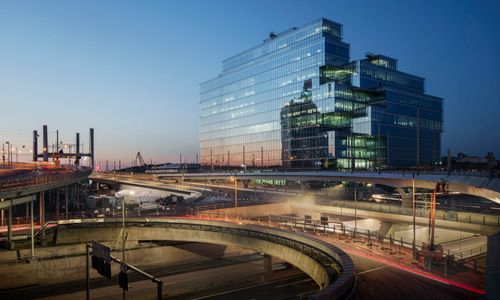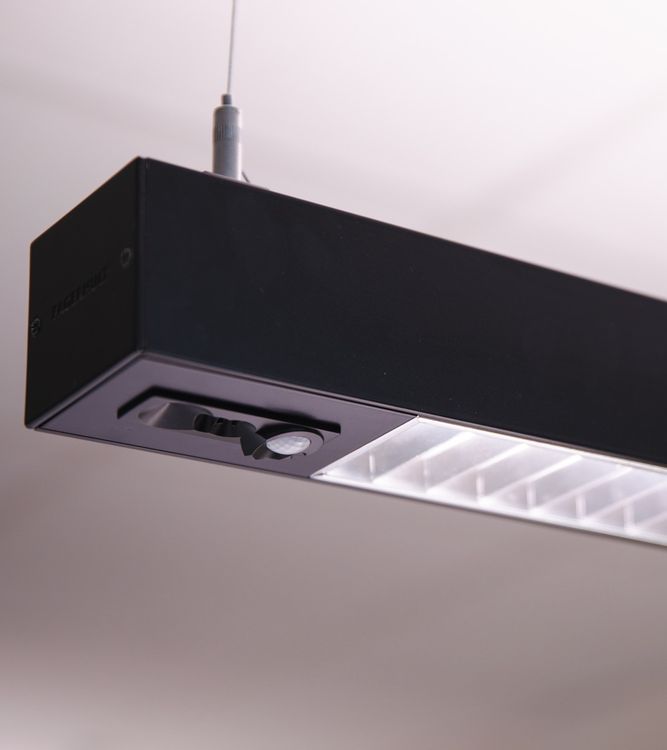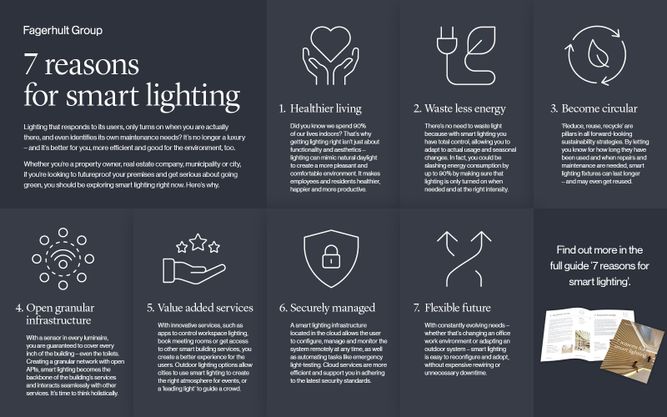Smart lighting
This is smart light
A luminaire equipped with a sensor controlling the light autonomously and is connected with the external network to share data.

Lighting accounts for up to 15 per cent of global electricity consumption and by using the latest smart lighting solutions, we can potentially reduce energy consumption by up to 90 per cent. Smart lighting is therefore an important part of our current and future offering.
This means we can reduce both the environmental impact of our solutions and the cost for our customers. In addition, connected solutions create new business opportunities and are gaining significant interest from the market. Sensor data gathering and integration into larger systems open up new partnerships that can generate new business for us, but more importantly, more value for our customers.
A smart light is a sustainable light
The rapid technological development provides new digital solutions for smart lighting, where lighting becomes part of a connected ecosystem. This leads to better light environments, significant energy savings and reduced carbon footprint. In fact, 90% can be saved by replacing a traditionell fluorescent light with a smart light. Moreover, smart lighting systems facilitate a circular economy. By tracking the usage duration and intensity of each luminaire, it enables proactive assessment of their condition, facilitating timely preventive maintenance or replacement.
New service opportunities
Smart lighting solutions provide opportunities to add on services enhancing the user experience and creating valuable insights. With a sensor in each light our smart lighting system creates a granular network of data points. Data that can be used by other parties to create added value to our customers. For example, indoor navigation helping students to find their way around a campus or allowing the facility manager to understand how a space in the building is being utilized. In an outdoor environment the smart lighting system can for example be used for leading a crowd in the right direction at an event.
Sensor-equipped luminaires
Smart lighting refers to sensor-equipped luminaires that can receive and share information with their surroundings. This means there are two primary functions: lighting controls that turn on or off, or dim, individual luminaires or entire networks; and collecting data from the luminaire’s built-in sensors that can be used to create further added value.


7 reasons for smart lighting
Lighting that responds to its users, turns on when you are actually there, adopts to the daylight conditions and even identifies its own maintenance needs? It might once have felt like a luxury, but the benefits of smart lighting include better health, more efficiency, lower costs and environmental wins too. In fact, it’s not just a nice-to-have – it’s an imperative for any business, real estate company, municipality or city looking to futureproof their premises, meet sustainability targets and integrate with other systems to offer new services to tenants and citizens.